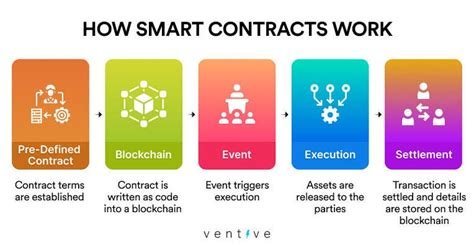Using AI to Optimize Smart Contracts: A New Era for Blockchain
The blockchain revolution has changed the way we think about digital transactions, decentralized applications (dApps), and smart contracts. However, one of the major challenges faced by blockchain developers is optimizing smart contracts to ensure smooth execution of tasks, prevent errors, and increase efficiency. Artificial intelligence (AI) is poised to play a revolutionary role in this optimization process.
Current State of Smart Contracts
Traditional smart contracts are static programs that execute on a specific chain or platform. They offer unparalleled security and decentralization, but due to their fixed architecture, they can be fragile and error-prone. Current smart contract platforms like Ethereum are struggling to meet the growing demand for complex decentralized applications (dApps).
The Need for AI-Based Smart Contract Optimization
The limitations of traditional smart contracts are becoming increasingly apparent. As blockchain-based systems evolve, developers need to optimize their contracts to ensure scalability, performance, and security. But this is a daunting task, especially when working with large-scale decentralized applications that require complex logic, conditionals, and dynamic data processing.
AI as a Game Changer
AI has become a key enabler of smart contract optimization. By leveraging techniques from machine learning (ML), natural language processing (NLP), and computer vision, developers can create more efficient, scalable, and secure smart contracts that adapt to changing market conditions.
Some of the AI-powered features that can be used in smart contracts include:
- Predictive modeling: AI algorithms can analyze historical data and predict potential issues, reducing the risk of errors and downtime.
- Automated testing: Machine learning can generate test cases and execute them automatically, providing comprehensive coverage and reducing manual testing time.
- Optimization: AI can identify bottlenecks in smart contract execution and optimize complex logic to increase performance and reduce latency.
- Dynamic programming: Natural language processing (NLP) techniques can be used to analyze contracts and generate optimal code for specific use cases, reducing programming complexity.
Real-World Applications
The benefits of AI-powered smart contract optimization are evident in a variety of blockchain applications:
- Decentralized Finance (DeFi)
: AI-powered contract analytics helps developers create more efficient lending protocols that reduce transaction costs and increase user adoption.
- Non-Fungible Token (NFT) Markets: Natural Language Processing (NLP)-based contract analytics enables more advanced NFT markets with optimized token transfer logic that reduces errors and increases efficiency.
- Supply Chain Management: AI-powered contract optimization improves supply chain management by forecasting demand, optimizing inventory levels, and streamlining logistics.
Challenges and Future Directions
While AI has transformed the way smart contracts are optimized, there are still challenges that need to be addressed:
- Scalability: As blockchain-based systems become more popular, the need for scalable AI solutions is becoming increasingly urgent.
- Data Quality: Ensuring data quality is critical to accurate predictions and optimized contract execution. However, collecting high-quality data from different sources can be a significant challenge.
- Explainability

: Understanding how AI-based contracts work and why they perform optimally is critical to ensuring transparency and trust in blockchain-based systems.
Conclusion
Integrating AI with smart contract optimization has the potential to transform the blockchain landscape.